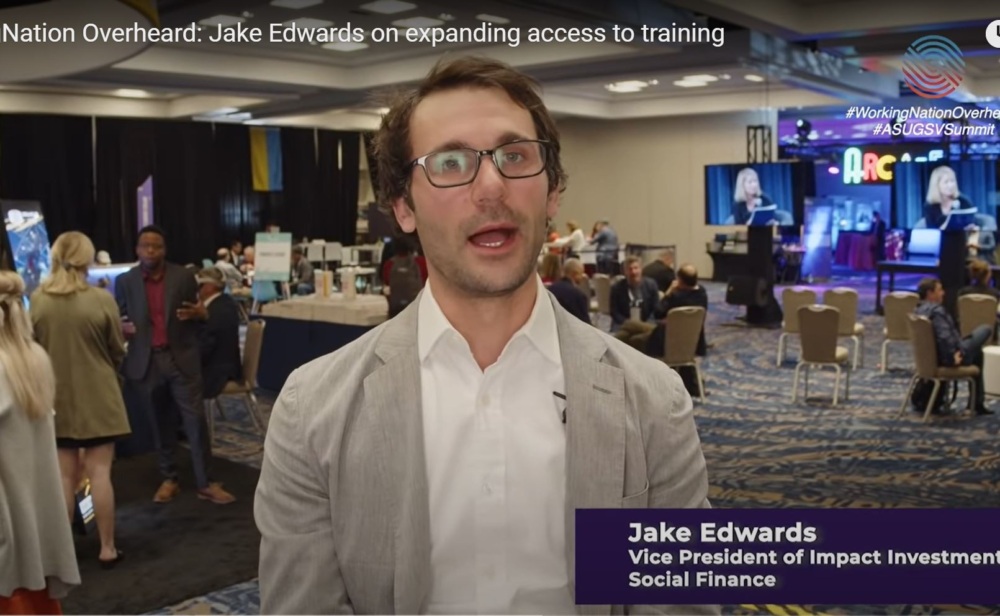

Impact Investments
At Social Finance, we build impact investments and advisory projects to drive measurable outcomes in education, economic mobility, health, and housing across the U.S. As such, the input of people from the communities we serve is critical, even for our legal work.
I explored this topic last month by moderating a panel at the Impact Investing Legal Working Group, an annual convening hosted by the Grunin Center for Law and Social Entrepreneurship at NYU School of Law (and at which Social Finance previously won top honors for our Social Impact Bond work). In our discussion on “Elevating Beneficiaries: Inclusive Design in Impact Instruments,” we explored how lawyers can and should engage with communities in deal diligence and structuring. Below are three key takeaways from that discussion.
1. To better understand the needs of priority populations and involve them in project design and governance, service providers must prioritize community voices.
Despite their commitments to measuring impact, organizations in the impact investing field sometimes struggle to understand if and how participants’ lives have improved by specific impact investments.
Panelist Lindsay Smalling, Head of Sales at 60 Decibels, explained that her company addresses this challenge by interviewing community members to understand how specific projects have impacted them. This means understanding who accessed specific services and how those services truly helped those participants, rather than simply counting how many participants were served. The research is used for a wide range of purposes, from service provider diligence to qualitative project impact evaluation to information-gathering for funders.
Emily Schaffer, formerly of Year Up, added that her nonprofit is similarly committed to learning from participants. In designing new programs, Year Up seeks to understand what prospective learners hope to earn after graduating. Based on feedback from these conversations, Year Up then offers programming across the country that meaningfully changes learners’ lives.
2. For impact investing organizations like Social Finance that rarely engage directly with community members, service providers can be a critical proxy for accessing and understanding community perspectives.
At Social Finance, we believe working directly with providers like Year Up is one of the best proxies for gathering participant and community voices. As Year Up gathers and shares community input on a regular basis, we can tap into those community perspectives to design project terms better.
Kendrick Vaughn, Senior Counsel at Google, shared a similar approach. While Google is often in conversation with people who have gone through its programs, it more frequently relies on service providers to engage directly with community members. Combined with reporting requirements and formal evaluations, this input allows Google to assess whether its programs are creating their intended impact.
In contrast, Alison Looman, Senior Investment Counsel at the Ford Foundation, shared that her team invests in a diverse slate of fund managers, thereby empowering even more people to engage in social impact work. They do so with ongoing support and guidance from the foundation.
3. Lawyers have a role to play in understanding the perspectives of community members and embedding those learnings into deals.
The $100 million Google Career Certificates Fund, in collaboration with Google, Social Finance, Merit America, Year Up, and other partners, is an excellent example of how to use community input to shape the design of a broad-reaching intervention. In this investment program, Google is providing substantial financial support to enable learners to receive outcomes-based loans to enroll in career training with high-quality training providers. Upon graduating, these learners receive Google Career Certificates in a variety of in-demand digital and IT fields. Learners who land jobs earning above a designated minimum income threshold repay the cost of their loans at 0% interest; those who do not earn above the threshold pay nothing.
Designing this program required input from Year Up and Merit America, who shared what they have heard from learners during their own community research. Implementing the program has also necessitated lawyers building innovative legal structures based on the constraints and requirements of the partners, including this information collected from end-users.
Lawyers not only write project terms that make impact investments effective, measurable, and replicable; they also design terms that reflect a nuanced understanding of the experience of the learners who participate in the program.
Thus, when documenting these transactions, lawyers not only write project terms that make impact investments effective, measurable, and replicable; they also design terms that reflect a nuanced understanding of the experience of the learners who participate in the program. Kendrick shared this sentiment with me as we prepared for our panel conversation:
I feel fortunate at Google that I have a seat at the table, but I fill the whole seat. I’m not just a lawyer. ... People respect and appreciate me for wearing multiple hats and affecting multiple parts of the transaction. I don’t ever feel like I must stay in my legal lane. As lawyers, we’re looking at everything that goes into the deal—not just [the] legal aspect.—Kendrick Vaughn, Senior Counsel, Google
I feel the same way. My job as a lawyer is to ask questions that clarify the goals of the project and how it’s expected to operate, brainstorm creative structuring solutions, and document the details that bring our projects to fruition. By interrogating all aspects of program design, I can ask probing questions about how project terms serve people—and push for changes when they do not. In doing so, I am an advocate for bringing community members’ experiences and perspectives into the design of our work. And most importantly, I can make sure that across formal deal documents, those experiences and perspectives are reflected and preserved.
Related Insight

Social Finance in The New York Times: Google Creates $100 Million Fund for Skills Training Program
Social Finance is managing the $100 million Google Career Certificates Fund, a Google-backed initiative targeting how to find, train, and create paths to good jobs in the modern economy for the nearly two-thirds of American…

WorkingNation Video: Jake Edwards on the Google Career Certificates Fund
Social Finance Vice President Jake Edwards spoke with WorkingNation about our new $100 million investment program supported by the Google Career Certificates Fund.